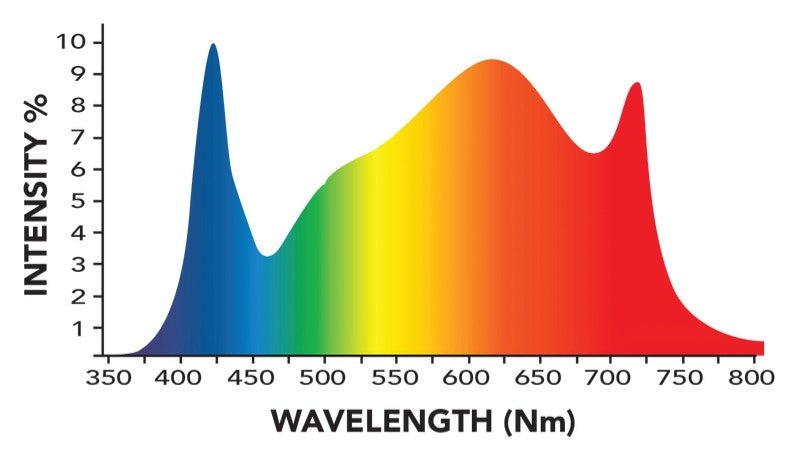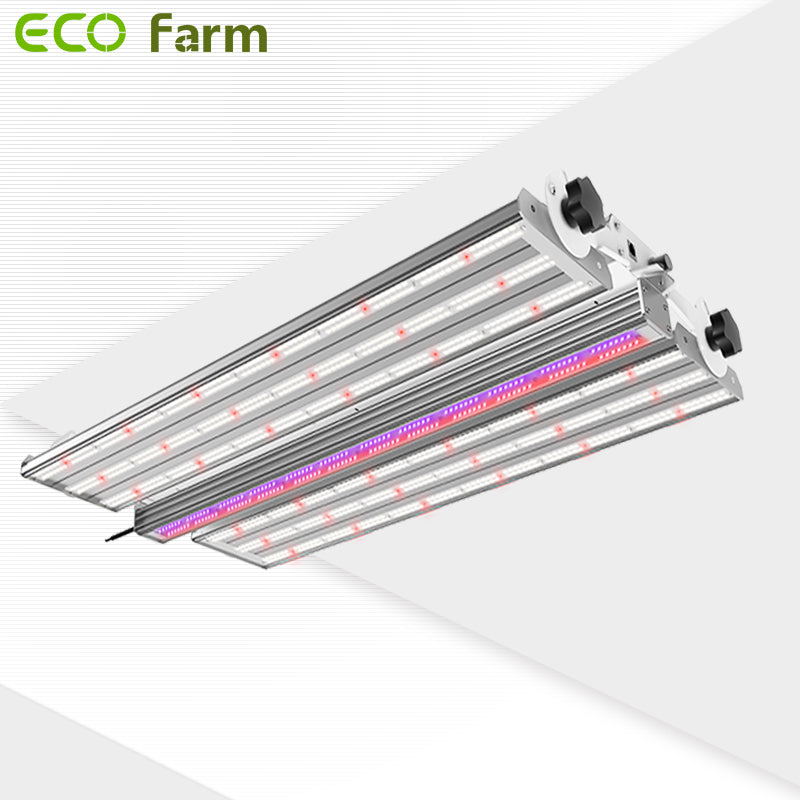- Home
- SHOP ECO FARM
-
TOP BRANDS
-
Grow Lights Brands
- Adjust-A-Wing
- Apollo Horticulture
- Bestva
- Black Dog LED
- California Lightworks
- ChilLED Grow Light
- Eco Farm
- HLG - Horticulture Lighting Group
- Kingled
- Kind LED
- Mars Hydro
- Morsen
- Neilo
- NextLight
- Phlizon
- PlatinumLed
- Roleadro
- Optic LED Grow Lights
- ViparSpectra
- Vivosun
- EYE Hortilux
- IPOWER
- NanoLux
- Phantom grow light
- Gavita grow lights
- Grower's Choice
- Lumatek
- Maxibright
- Yearld Pro
- ThinkGrow
- Crecer Lighting
- Green Sunshine Electric Sky
- fohse aries
- loriflux
- luxx
- fluence
- iluminar
- Lex
- LTC
- Rayonled
- FGI
- PHOTONTEK
- Grow Tents & Kits Brands
- Extraction & Harvest Brands
- Climate Control & Hydroponic Brands
-
Grow Lights Brands
- COMPANY INFO
- COOPERATE WITH US
- Blog
- Sign in
- Home
-
SHOP ECO FARM
- ECO Farm Grow Lights
- ECO Farm LED Grow Lights
- ECO Farm Quantum Board
- ECO Farm Samsung LED Grow Lights
- ECO Farm COB Grow Lights
- ECO Farm Commercial Lights
- ECO Farm Supplemental Grow Light
- ECO Farm Fluorescent grow lights
- ECO Farm HPS & MH Grow Lights
- ECO Farm CMH Grow Lights
- ECO Farm HID/CMH Bulbs & Ballasts
- ECO Farm Grow Tents & Kits
- ECO Farm 2x2ft Grow Kits
- ECO Farm 3x3ft Grow Kits
- ECO Farm 3.3x3.3ft Grow Kits
- ECO Farm 4x4ft Grow Kits
- ECO Farm 5x5ft Grow Kits
- ECO Farm Grow Tent - Standard Style
- ECO Farm Grow Tent - Extension & Roof & Lodge Style
- ECO Farm Extraction & Harvest
- ECO Farm Rosin Press Machine
- ECO Farm Dry & Wet Trimmers
- ECO Farm Oil Accessories
- ECO Farm Medicinal Plants Grinder
- ECO Farm Medicinal Plants Containers
- ECO Farm Medicinal Plants Dryer
- ECO Farm Refrigeration Dryer
- ECO Farm Climate Control & Other Accessories
- ECO Farm Inline Duct Fans
- ECO Farm Oscillating Fans
- ECO Farm Exhaust Fans
- ECO Farm Air Filter
- ECO Farm Duct Muffler
- ECO Farm Ventilation Kits
- ECO Farm Plant Humidifiers
- ECO Farm Plant Dehumidifiers
- ECO Farm Hydroponic Accessories
- ECO Farm Other Accessories
- ECO Farm Hydroponics Microscopes
-
TOP BRANDS
- Grow Lights Brands
- Adjust-A-Wing
- Apollo Horticulture
- Bestva
- Black Dog LED
- California Lightworks
- ChilLED Grow Light
- Eco Farm
- HLG - Horticulture Lighting Group
- Kingled
- Kind LED
- Mars Hydro
- Morsen
- Neilo
- NextLight
- Phlizon
- PlatinumLed
- Roleadro
- Optic LED Grow Lights
- ViparSpectra
- Vivosun
- EYE Hortilux
- IPOWER
- NanoLux
- Phantom grow light
- Gavita grow lights
- Grower's Choice
- Lumatek
- Maxibright
- Yearld Pro
- ThinkGrow
- Crecer Lighting
- Green Sunshine Electric Sky
- fohse aries
- loriflux
- luxx
- fluence
- iluminar
- Lex
- LTC
- Rayonled
- FGI
- PHOTONTEK
- Grow Tents & Kits Brands
- Apollo Horticulture
- Black Box
- CoolGrows
- Eco Farm
- GrowLab
- Gorilla Grow Tents
- Mars Hydro
- Quictent
- Secret Jardin
- Unit Farm
- TopoGrow
- VIVOSUN
- Topolite
-
COMPANY INFO
-
COOPERATE WITH US
- Blog
How do I choose the best LED grow light?
July 28, 2020
What is the effect of LED grow lights on plants?
Color variations of the LED grow lights are directly connected to the intended purpose – various studies have shown that certain colors influence plant growth, affecting root and flower formation (blue and red light spectra) which practically means that the majority of plant sorts will complete a normal growth cycle if exposed to both blue and red grow lights. Adding other colors to the spectrum, such as green, far-red and deep-blue aids this process by giving plants more information about its environment and overall resulting in higher quality plants (quicker growth, more secondary metabolite accumulation etc). A spectrum that contains all colors is called full spectrum and mostly resembles the sunlight. If it has high proportions of green, the light will appear white to human eyes and while not a crucial factor for plant growth, it does make the work around these lights easier and makes visual inspection of the plants possible.
If you are new to the wonderful world of led grow lights, you might be in a haze trying to figure out how to choose the most practical light for your grow. LED grow lighting is very different from a metal halide or a high-pressure sodium setup in that LED fixtures vary drastically in shape, spectrum, heat load, and power. But fear not, this article will assist your LED grow light search --- saving you time, money, and assuring you the highest quality crop.
Determine the Plants You Are Growing
Before buying indoor grow lights, you must know what you’ll use them for. Since their primary purpose is to provide the light that plants can use to photosynthesize, you need to know the kinds of plants you’ll be growing. You won’t be using it to provide bright lights to your home or anywhere else.
When you already know which plants you want to grow, do some research. Find out what kind of conditions they thrive in so you can provide their needs. LED grow lights can have different features that affect plant life, and different plants also react differently to various conditions.
Know the Surface Area
If you plan to grow plants inside your home, then you may not need plenty of LED grow lights. However, in the case of large greenhouses, you’ll need to have several units. You need to know the surface area so you can calculate how much light you should provide.
If the surface area is extensive, then consider getting several units so each plant can receive plenty of light. The ones directly under the lights won’t have problems photosynthesizing because they get sufficient light. However, those farther away from the single light may have difficulty growing healthy.
The LED Chip
You always want to look for chips that are at least 3W, any less than that won’t give your plants enough consistent light coverage. This means each chip needs to be 3W, not 3 lights of 1W LEDS, so look out for that when reading the description. The 3W chip offers the best quality in whites, blues and reds.
The Output
This is also important; you want to read product descriptions for total output. How many units does the lamp claim to have? This can be 300W, 400, 600 or even 1000. Always check for the output and look for at least 300W.
Understand that when it comes to LEDs you can’t always get 100% power so you usually end up with slightly less wattage than what the recommended is, and chips will always burn out, no matter what the quality, so the higher a wattage the more you can compensate for wattage loss.
The Spectrum
Remember that it is the red blues, IR and UV that also counts when growing your medicinal plants crop, so you want to stick to the ideal PAR values. Look for blues that have a range from 440-470nm, with rends in the 640 to 660nm.
Grower's Choice ROI-E680

The Grower's Choice ROI-680 LED grow light is inspired by a collaboration between two of the most prominent and respected companies in the indoor grow lighting industry: TSL Horti Tech and Growers Choice.These two brands have come together to combine their years of experience and innovation in grow lighting to create this high performance, cost effective, efficient lighting solution for commercial growing.
GREAT SPECTRUM FOR ALL STAGES OF GROWTH

Fluence SPYDR 2i 630W LED Grow Light

The SPYDR 2i is a high-performance top-lighting solution for commercial growers who want to push the envelope with high-PPFD cultivation practices and experimental applications or treatments. SPYDR 2i provides superior intensity, uniformity, and efficacy and is not intended for beginners or growers not supplementing with CO2. SPYDR 2i delivers an average of 1060 µmol/m2/s of light over a 4’x4’ area at only 6” above canopy.
ECO Farm GLT 500 Dimmable Samsung LM301B Grow Light

Eco Farm Commercial Indoor LED grow light uses our custom designed full-spectrum high efficiency 1560 LM301B white chips+36 Osram 660nm Red chips.
50W Enhanced Bar with UV(25W) and Far red(25W) optional.
Far-red light causes plants to stretch out and reduces the amount of chlorophyll (which is essential for plant growth) in leaves. When used for a short period, far-red light can stimulate flowering.
UV-B can induces a range of strong morphological effects in plants, including leaf thickness, leaf discoloration, cotyledon curling, inhibition of hypocotyl growth, stem and leaf elongation, axillary branching etc.
Spectrum

Final Thoughts
LED grow lights is a revolutionary solution to plant growth. Relying on sunlight to grow your plants is not always enough, especially for places that experience long sunless winters. Now, you can grow plants even inside your home. So, if you plan to buy LED grow lights, make sure to consider the tips above so you get the best one for your plants.
